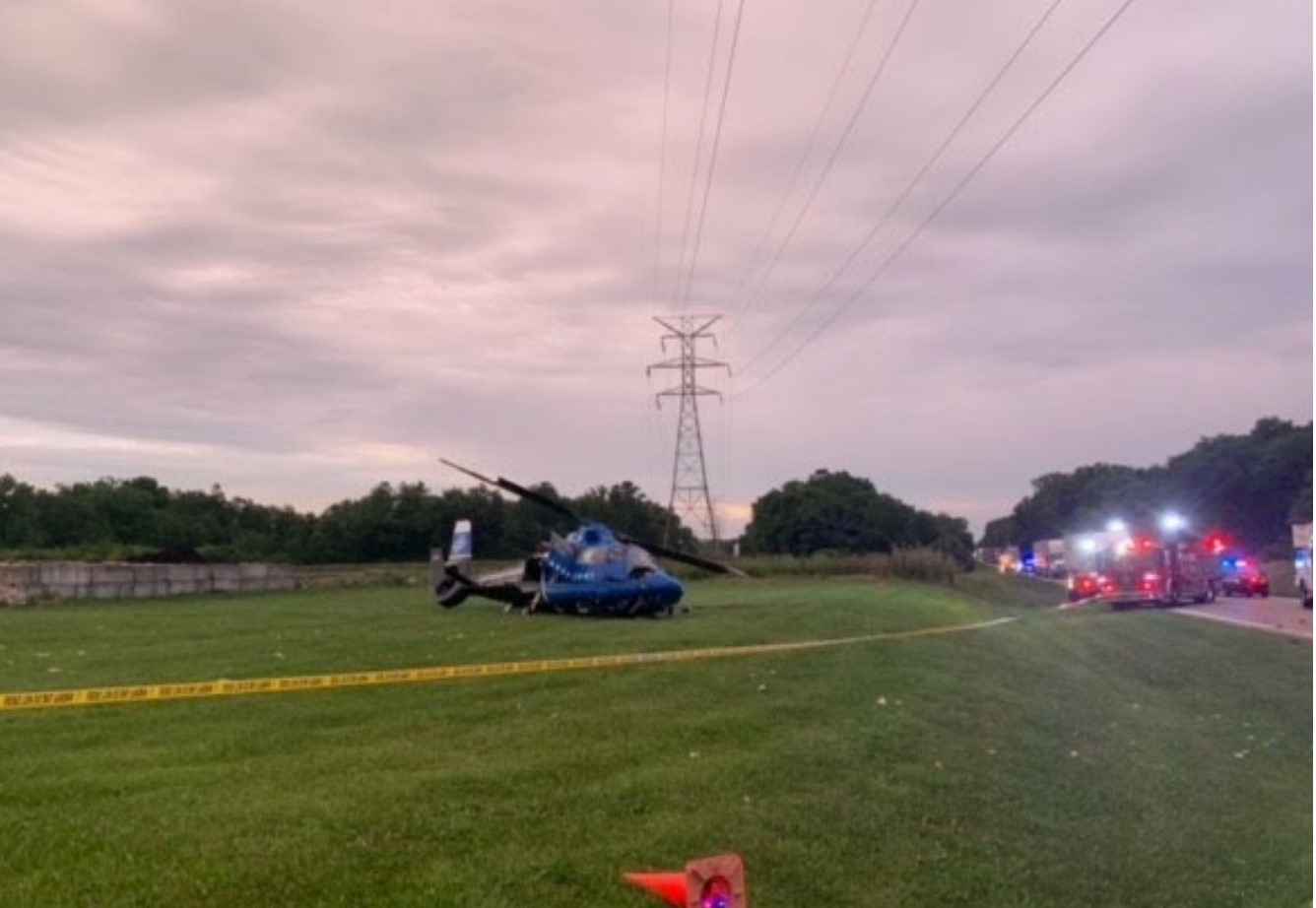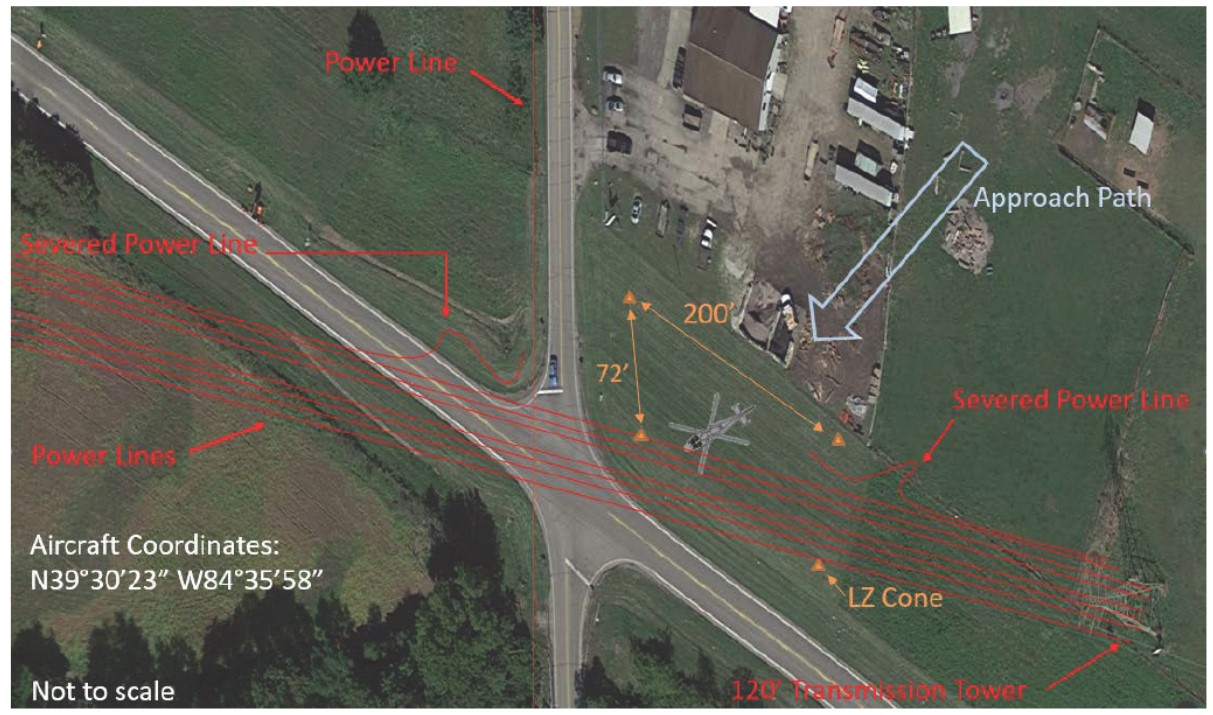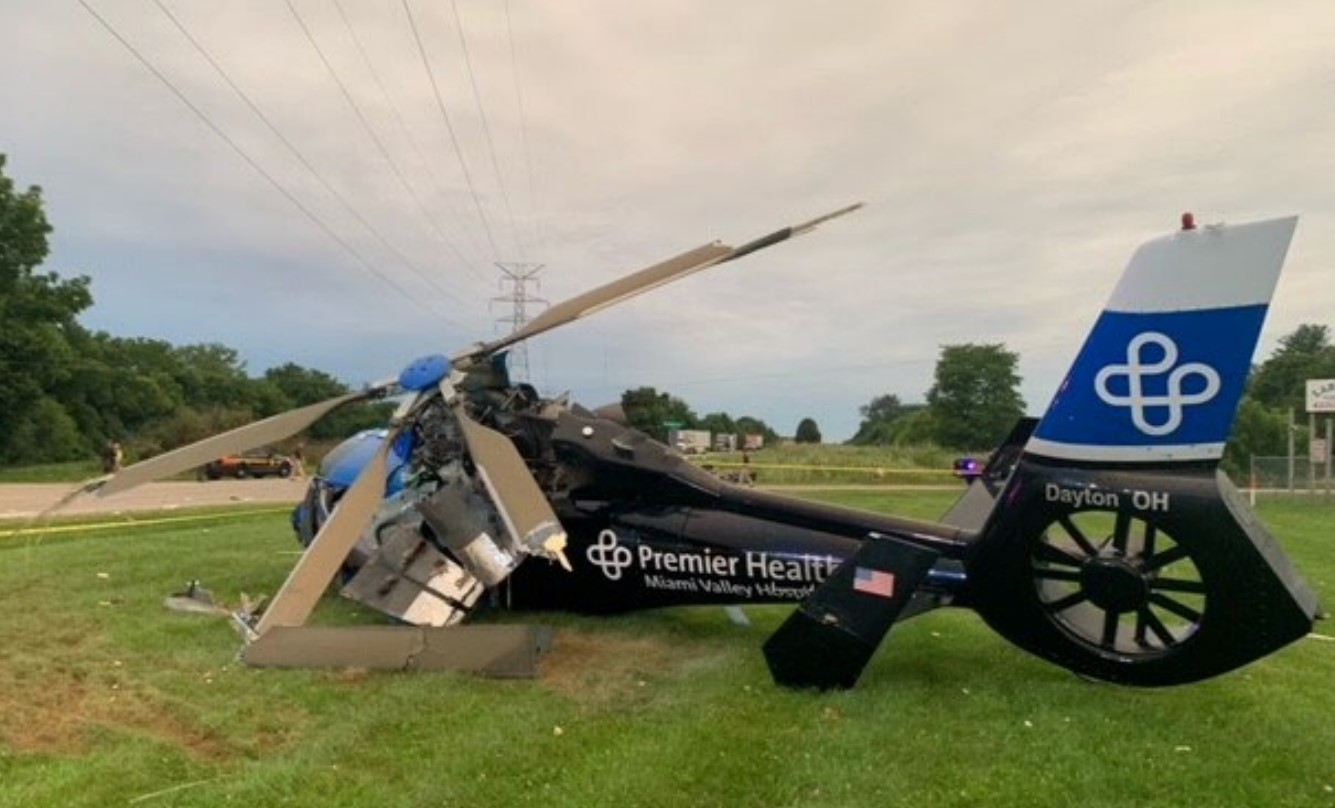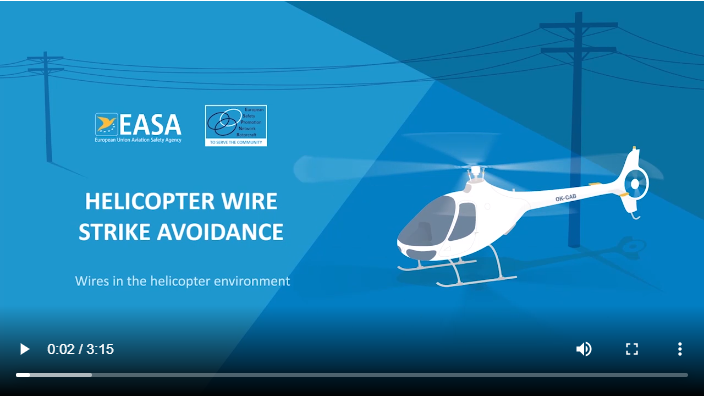Air Ambulance Night Wirestrike at Poorly Chosen Landing Site (AMC AS365N3 N520CF)
On 26 July 2022 Airbus AS365N3 air ambulance helicopter N520CF operated by Air Methods Corp (AMC) for Dayton‘s Miami Valley Hospital Careflight, was involved in an wirestrike accident near Hamilton, Ohio. The three occupants sustained minor injuries. The US National Transportation Safety Board (NTSB) issued their safety investigation report on 7 February 2024.

AMC Air Ambulance AS365N3 N520CH After Landing Site Wirestrike (Credit: Operator via NTSB)
The Accident Flight
The helicopter took off at 04:28 Local Time from Warren County Airport, Ohio, heading to an ad hoc landing site near a motor vehicle accident. The Pilot (4336 hours total, 620 on type) and one Flight Nurse occupied the front seats and one Flight Nurse was in the cabin. The Pilot was using a Night Vision Imaging System (NVIS) and flying in night Visual Meteorological Conditions (VMC).
When about 9 miles away, the Pilot contacted on-scene fire department personnel for site information. They reported that there were high voltage power lines on the south side of the landing site. The site was marked by four illuminated orange cones.
As the pilot continued to the scene, he knew the winds were calm and, therefore, he orbited the scene from the south to the north. The pilot made an approach from the south and was looking out for the powerlines…
He could see the towers but not the wires. The pilot used the landing light to try illuminate the wires without success.
The pilot stated that he did not think the wires would be in and around the landing zone. He thought the wires were farther out from the landing zone and not below the helicopter.
However, as the helicopter descended for landing, the main rotor blades contacted the wires and the helicopter fell about 30 to 50 ft.

AMC Air Ambulance AS365N3 N520CH Accident Site (Credit: Operator via NTSB)
The nose and left main landing gear struck the ground first at 04:55.
The helicopter sustained substantial damage to the main rotor blades, main rotor gearbox, and motor mounts [sic]; additionally, the left engine was hanging off the side of the helicopter.
All three occupants egressed the helicopter after the engines were shut down.

AMC Air Ambulance AS365N3 N520CH After Landing Site Wirestrike (Credit: Operator via NTSB)
A 69 year old woman, who had been involved in the road traffic collision, died at the scene.
NTSB Safety Investigation
Post accident examination by a Federal Aviation Administration (FAA) inspector revealed that the helicopter struck the high voltage wires, severing one wire, and then landed hard.
We note that the Flight Nurses do not appear to have been interviewed nor is their presence discussed in the NTSB report or public docket other than in relation to their post accident egress. Furthermore the fire fighters were not apparently interviewed either and their NTSB report is silent on their training and procedures for establishing an ad hoc landing site.
Some free guidance on training material for first responders is provided in links below, though reliance purely on generic guidance documents, PowerPoints or videos is highly unlikely to be sufficient.

AMC Air Ambulance AS365N3 N520CH After Landing Site Wirestrike (Credit: Operator via NTSB)
There also are no details on what mapping and obstacle data was available to the pilot or what Helicopter Terrain Awareness and Warning System (HTAWS) was fitted. According to 135.605:
After April 24, 2017, no person may operate a helicopter in helicopter air ambulance operations unless that helicopter is equipped with a helicopter terrain awareness and warning system (HTAWS) that meets the requirements in TSO–C194 and Section 2 of RTCA DO–309.
Though in this case the pilot was aware that there were wires near the landing site, just not their actual position.
NTSB Probable Cause
The pilot’s decision to continue the landing without having visually identified wires that were known to be in the vicinity of the landing zone, which resulted in a collision with the wires while attempting an off-airport landing in dark night visual meteorological conditions.
It is surprising that no contributory factors were identified.
Safety Recommendations
Disappointingly, yet again, there are no NTSB safety recommendations for this helicopter accident report.
AMC do make two recommendations in their accident report form, although they do not feature in the NTSB final report. The first is self evident and a unhelpful statement of the obvious:
Positively identify and avoid contact with fixed objects during approach and landing phase of aircraft operations.
The second is a little more useful, but not overtly linked to any specific enabling action(s):
First responders should make every effort to ensure ad hoc landing zones meet minimum necessary requirements for aircraft operations. and are free of overhead obstructions.
Safety Resources
The European Safety Promotion Network Rotorcraft (ESPN-R) has a helicopter safety discussion group on LinkedIn. You may also find these Aerossurance articles of interest:
- Second Time Unlucky: Fatal Greek Wirestrike High-Wire Illusion
- Garbage Pilot Becomes Electric Hooker
- Low Recce of HEMS Landing Site Skipped – Rotor Blade Strikes Cable Cutter at Small, Sloped Site
- US Air Ambulance Near Miss with Zip Wire and High ROD Impact at High Density Altitude
- Hanging on the Telephone… HEMS Wirestrike
- Beware Last Minute Changes in Plan
- Norwegian HEMS Landing Wirestrike
- HEMS Pilot Seizure While Rotor-Running
- Air Ambulance EC135 Loss of Control & Main Rotor / Engine Overspeeds
- Blinded by Light, Spanish Customs AS365 Crashed During Night-time Hot Pursuit
- Police Helicopter Unanticipated Yaw & Fatal Water Impact
- Offshore Night Near Miss: Marine Pilot Transfer Unintended Descent
- EC135 Air Ambulance CFIT when Pilot Distracted Correcting Tech Log Errors
- Managing Interruptions: HEMS Call-Out During Engine Rinse
- Distracted Dynamic Rollover
- Sécurité Civile EC145 SAR Wirestrike
- Firefighting Helicopter Wire Strike
- Fatal MD600 Collision With Powerline During Construction
- Fatal Wire Strike on Take Off from Communications Site
- Dusk Duck: Birdstrike During Air Ambulance Flight
- HEMS AW109S Collided With Radio Mast During Night Flight
- Air Ambulance Helicopter Downed by Fencing FOD
- Ambulance / Air Ambulance Collision
- Multi-Tasking Managers & Deficient Operational Control: Low Viz AS350B3 Take-Off Accident
- A HEMS Helicopter Had a Lucky Escape During a NVIS Approach to its Home Base
- Air Ambulance Helicopter Struck Ground During Go-Around after NVIS Inadvertent IMC Entry
- Automation Issues During Night SAR Training – Near CFIT
- North Sea Helicopter Struck Sea After Loss of Control on Approach During Night Shuttling (S-76A G-BHYB 1983)
- NTSB Investigation into AW139 Bahamas Night Take Off Accident
- Night Offshore Training AS365N3 Accident in India 2015
- Loss of Control, Twice, by Offshore Helicopter off Nova Scotia
- SAR Helicopter Loss of Control at Night: ATSB Report
- US Fatal Night HEMS Accident: Self-Induced Pressure & Inadequate Oversight
- HEMS A109S Night Loss of Control Inflight
- Air Ambulance A109S Spatial Disorientation in Night IMC
- HEMS S-76C+ Night Approach LOC-I Incident
- NVIS Autorotation Training Hard Landing: Changed Albedo
- HEMS Air Ambulance Landing Site Slide
See also:
- EHEST Leaflet HE 3 Helicopter Off Airfield Landing Sites Operations
- Guidance on “Welcoming Helicopters” at emergency sites.
In Wire, the Invisible Enemy, Flight Safety Australia say:
Several factors make wires invisible much of the time, even to a trained and observant crew.
These include:
- atmospheric conditions
- cockpit ergonomics
- dirt or scratches on cockpit windows
- viewing angle
- sun position
- visual illusions
- pilot scanning abilities and visual acuity
- flight deck workload
- camouflaging effect of nearby vegetation.
Wire is no respecter of experience. About 52 per cent of wire strikes have been by pilots with more than 5000 hours.
The European Safety Promotion Network – Rotorcraft (ESPN-R) has published this video and guidance with EASA:


0 Comments
Trackbacks/Pingbacks